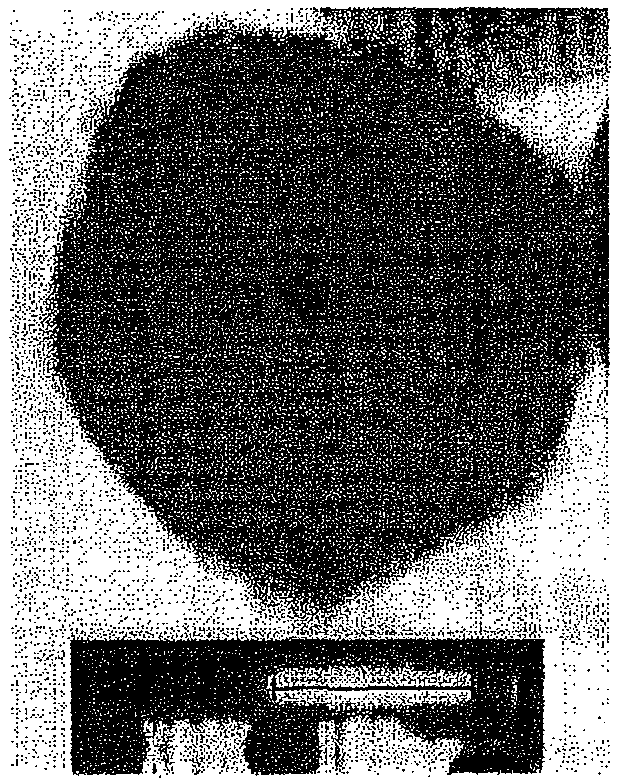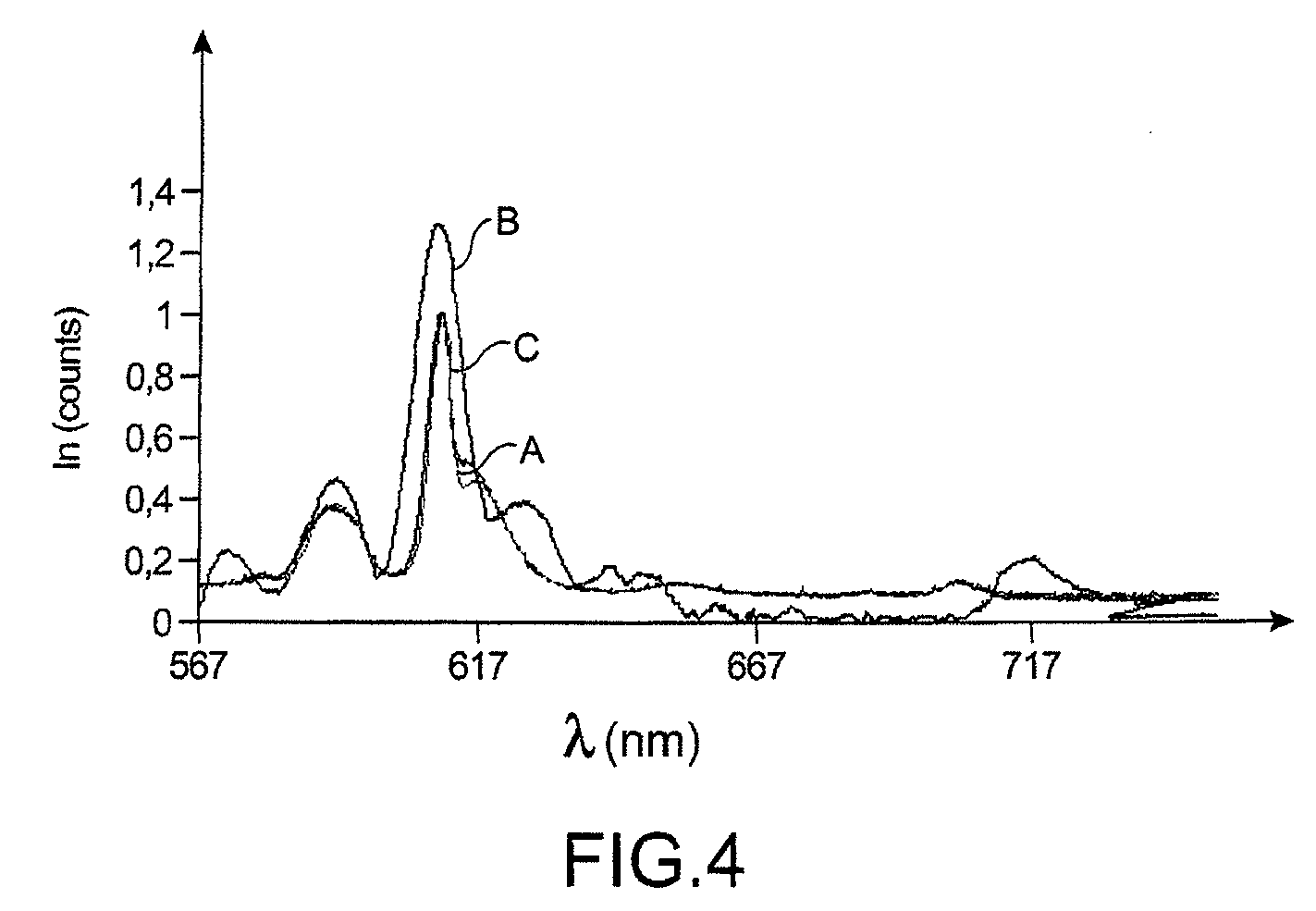Coated Nanoparticles, in Particular Those of Core-Shell Structure
a nanoparticle and core-shell technology, applied in the field of coating nanoparticles, can solve the problems of unsuitable industrial development of this type of application, unsuitable germination process, and inability to meet the requirements of industrial development, and achieve the effects of adequate chemical reactivity, good dispersion and homogenisation
- Summary
- Abstract
- Description
- Claims
- Application Information
AI Technical Summary
Benefits of technology
Problems solved by technology
Method used
Image
Examples
example 2
[0209]In this example, gold nanoparticles equipped, provided, with a ZrO2 primer layer, in other words, nanoparticles of gold core —ZrO2 shell structure which are intended to be incorporated into beads, are prepared according to the invention.
[0210]The procedure utilised to prepare the nanoparticles is slightly different from and complementary to the procedure employed in Example 1.
[0211]More precisely, in particular the dilution and the addition of a reducing agent are varied in order to maintain an average size of nanoparticles less than 20 nm instead of an average size of nanoparticles of about 20 nm in Example 1.
[0212]6.93 mg of gold salt (HAuCl4, 3H2O) are dissolved in 15 mL of DMF then transferred into a 100 mL flask.
[0213]2.5 mL of H2O are added to the gold solution with stirring.
[0214]In a 250 mL round-bottomed flask, 8.205 μl of acetyl-acetone then 35.24 μl of Zr(OPr)4 are added rapidly and with vigorous stirring to 40 ml of isopropanol. The DMF solution is next rapidly pou...
example 3
[0218]In this example, non-porous beads of zirconium oxide having an average size of 300 nm (size of bead) are prepared, these beads being essentially spherical, this size corresponding to their average diameter. The non-porous zirconium oxide encapsulates gold nanoparticles such as those prepared in Example 1 or indeed in Example 2.
[0219]The procedure is as follows:
[0220]0.06 mL of propionic acid are dissolved in 15.5 mL of butanol then transferred into a 100 mL round-bottomed flask (solution A).
[0221]In a 100 mL round-bottomed flask, 2.24 mL of Zr(OPr)4 then 2 mL of a solution containing gold nanoparticles dispersed in isopropanol (produced as in Example 1 or else as in Example 2) are added rapidly and with vigorous stirring to 10 mL of butanol (solution B).
[0222]The solution B is next rapidly poured into the solution A. The mixture (solution C) is kept stirred for 30 minutes. Next a solution (D) containing 22 mL of butanol and 0.378 ml of H2O is added to the solution C with stirr...
example 4
[0229]In this example, the beads of zirconium oxide produced in Example 3 containing a gold core are incorporated into silica glass at a temperature of 1100° C.
[0230]The glass obtained containing gold nanoparticles coated by beads of ZrO2 is effectively a coloured glass: coloured zones correspond to gold nanoparticles which have been heat protected by the ZrO2 bead.
[0231]Besides, a glass into which unprotected gold nanoparticles are incorporated during melting is prepared, and the absorption spectrum of these two types of sample is then studied (the wavelength λ in nanometres is plotted on the x axis, and the absorbance A on the y axis) (FIG. 3).
[0232]The first spectrum relates to the glass into which unprotected gold nanoparticles were incorporated during melting; the second relates to the glass into which gold nanoparticles protected by a ZrO2 bead were incorporated during melting. The first spectrum (lower curve) shows that there is no specific absorption. On the other hand, the ...
PUM
| Property | Measurement | Unit |
|---|---|---|
| size | aaaaa | aaaaa |
| size | aaaaa | aaaaa |
| size | aaaaa | aaaaa |
Abstract
Description
Claims
Application Information
 Login to View More
Login to View More - R&D
- Intellectual Property
- Life Sciences
- Materials
- Tech Scout
- Unparalleled Data Quality
- Higher Quality Content
- 60% Fewer Hallucinations
Browse by: Latest US Patents, China's latest patents, Technical Efficacy Thesaurus, Application Domain, Technology Topic, Popular Technical Reports.
© 2025 PatSnap. All rights reserved.Legal|Privacy policy|Modern Slavery Act Transparency Statement|Sitemap|About US| Contact US: help@patsnap.com



